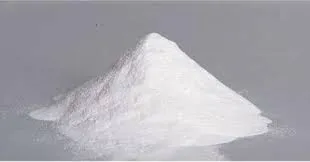
Nov . 01, 2024 16:20 Back to list
Viscosity Characteristics of Hydroxyethyl Cellulose in Various Applications and Solutions
Understanding Hydroxyethyl Cellulose Viscosity
Hydroxyethyl cellulose (HEC) is a water-soluble polymer derived from cellulose, a natural polymer found in plant cell walls. It belongs to a group of compounds known as non-ionic cellulose ethers. Due to its unique properties, HEC is widely used in various industries, including pharmaceuticals, food, cosmetics, and construction. One of the most crucial characteristics of HEC is its viscosity, which plays a significant role in determining its functionality in different applications.
Understanding Hydroxyethyl Cellulose Viscosity
In pharmaceuticals, HEC’s viscosity is critical as it affects drug release rates and stability. For instance, in oral drug formulations, the viscosity of HEC can influence the disintegration and dissolution of tablets and capsules. Moreover, in topical applications, the viscosity can determine the spreadability and adherence of ointments and gels on the skin. Thus, understanding and controlling HEC viscosity is essential for ensuring optimal therapeutic outcomes.
hydroxyethyl cellulose viscosity

In the food industry, HEC is utilized as a thickener, stabilizer, and emulsifier. Its ability to form viscous solutions enhances the texture and mouthfeel of food products. The viscosity of HEC is particularly beneficial in low-fat and reduced-calorie formulations, where it can provide a desirable consistency without additional calories. Moreover, the thickening properties of HEC help prevent ingredient separation in sauces, dressings, and dairy products, enhancing product quality and shelf life.
The cosmetic industry also leverages HEC's viscosity properties. In personal care products, such as shampoos, lotions, and creams, HEC serves to improve texture, enhance product application, and stabilize emulsions. The viscosity of HEC enables a smooth application and helps retain moisture in skin and hair products, thereby delivering enhanced performance.
The viscosity of hydroxyethyl cellulose solutions can also be influenced by environmental factors. For example, temperature changes can cause variations in viscosity. Typically, as temperature increases, viscosity decreases, and vice versa. Additionally, the pH level of a solution can significantly alter HEC’s viscosity, making pH adjustments necessary in formulations to maintain desired thickening properties.
In conclusion, the viscosity of hydroxyethyl cellulose is a crucial factor influencing its applications across diverse industries. From pharmaceuticals to food and cosmetics, HEC's ability to modify the texture and flow properties of solutions plays a significant role in product performance and consumer experience. As research continues to advance, further insights into the manipulation and application of HEC viscosity may lead to innovative formulations and enhanced functional products. Understanding these principles is essential for professionals working with this versatile polymer.
-
Versatile Hpmc Uses in Different Industries
NewsJun.19,2025
-
Redispersible Powder's Role in Enhancing Durability of Construction Products
NewsJun.19,2025
-
Hydroxyethyl Cellulose Applications Driving Green Industrial Processes
NewsJun.19,2025
-
Exploring Different Redispersible Polymer Powder
NewsJun.19,2025
-
Choosing the Right Mortar Bonding Agent
NewsJun.19,2025
-
Applications and Significance of China Hpmc in Modern Industries
NewsJun.19,2025







